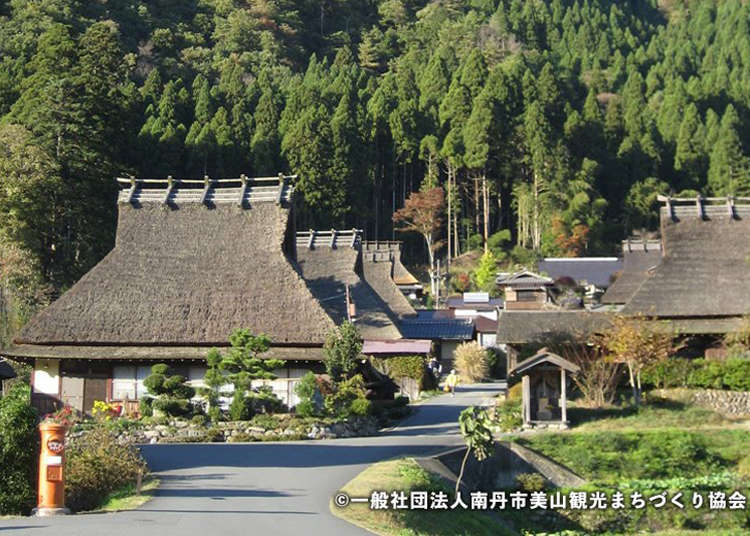
Located 1 hour 40 minutes by bus from Kyoto Station, the town of Miyama offers a view into Japan's rich agricultural heritage. Designated a semi-national park, the town is home to some 39 thatched farmhouses where people still live today. Miyama spans multiple hamlets that are scattered throughout the mountains and valleys, about 50 kilometers from central Kyoto. Despite its close distance to the city center, the village feels far removed from modern-day life.
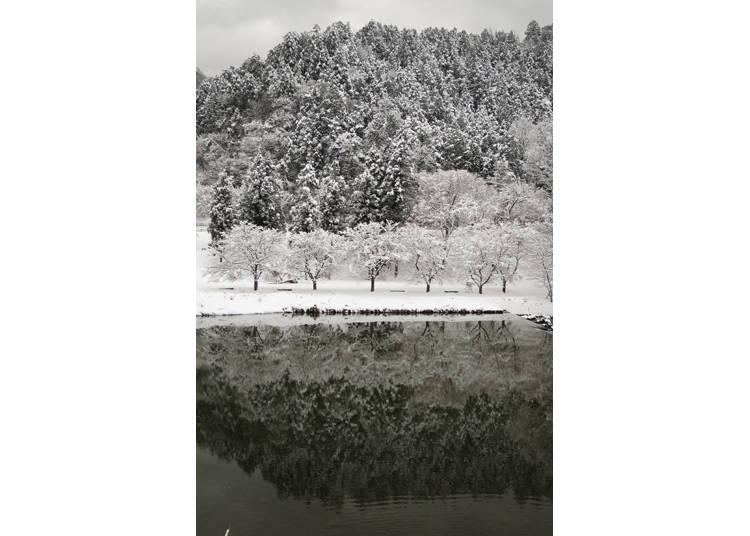
Upon arriving, you'll feel like you've stepped back in time to an area untouched by modern development. You can even stay overnight in one of several thatched houses. Numerous bed and breakfast-style guesthouses provide period-accurate amenities and activities where you can truly immerse yourself in the village's traditional charms. The surrounding area is home to scenic mountain hikes and forested paths, ripe for exploration.
Start with a guided tour of the village
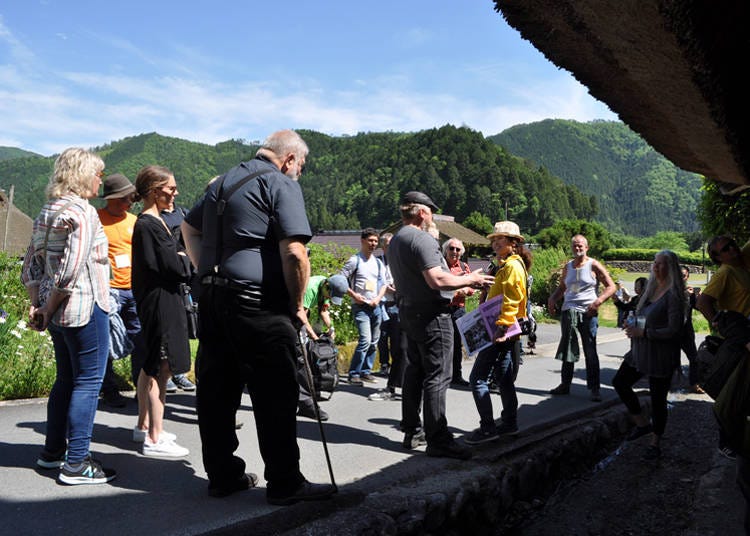
Begin your break with a guided walking tour around the village. For 2,000 yen (discount available for children), an English-speaking guide will meet you at Kayabuki-no-sato Bus Stop and take you on a 90-minute tour through the village, providing historical background and context on village life. Despite being centuries old and requiring much more upkeep than contemporary dwellings, people still live in many of these thatched homes. Though private residences are off-limits to the public, catching a glimpse of villagers maintaining this pre-modern rural lifestyle is sure to fill you with a sense of nostalgia.
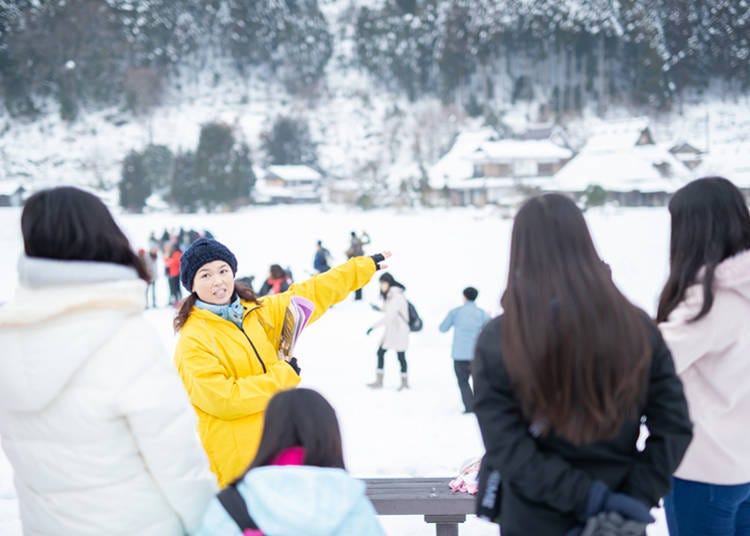
A morning and afternoon course are available to suit your travel schedule. Tours take place Monday, Tuesday, Friday, Saturday, and Sunday. The tour grants access to the Miyama Folklore Museum, where you can see the kinds of furniture and household implements that thatched-roof dwellers would have used in the past. Reservations can be made up to one day in advance. After the guided tour, consider taking a hike to the Yura River 2 kilometers away, where you can enjoy fishing for sweetfish, or simply relax in the tranquil natural environment.
-
Thatched Village Guided Walkかやぶきの里英語ガイドツアー(一般社団法人南丹市美山観光まちづくり協会)
- Address Kayabuki-no-sato Bus Stop, north of Miyama-cho, Nantan, Kyoto
- Phone Number 0771-75-9030
Program:Thatched Village Guided Walk (in English)
Meeting point:Kayabuki-no-sato Bus Stop, north of Miyama-cho, Nantan, Kyoto
Business hours:Daily, except Wednesdays and Thursdays
Fees:2,000 yen for adults; 1,000 yen for children aged 13–15; free for children aged 12 or younger. If a group comprises five people or fewer, the charge is 10,000 yen per group (tax-included).
Times:10 a.m.–11:30 a.m. (morning course); 1 p.m.–2 p.m. (afternoon course)
Requirements:Reservations required
Languages available:English/Japanese
Organized by:Kyoto Miyama Tourism Association
Email:info@kyoto-miyama.jp
Stay in your very own thatched house
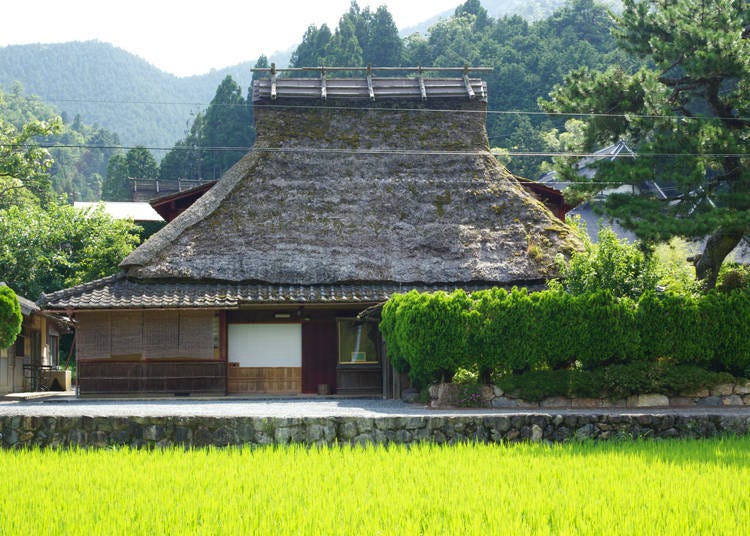
While day trips from Kyoto are convenient and hassle-free, some visitors may wish to spend more time immersed in Miyama's serene countryside. While there are numerous inns and guesthouses in the area, one particularly unique option is Miyama Futon and Breakfast, which boasts four separate thatched-roof cottages. The spacious homes are a great option for families or groups, and the outdoor grounds provide plenty of space for children to play. Hanabusa is perhaps the most notable of the four domiciles.
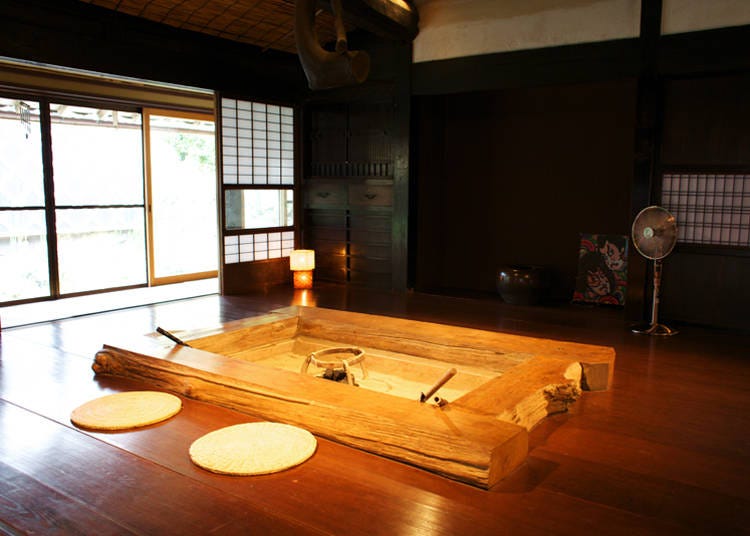
As a registered cultural heritage site, this 150-year-old home accommodates up to eight guests, and has a modern bathroom and kitchen. Outside you'll find a thatched chicken coop - replete with hens - and a Japanese garden. Catering services are also available. In the morning, staff prepare breakfast using local ingredients. At night, meanwhile, guests can enjoy an expansive kaiseki-style course meal of fish, vegetables, steamed hot pot, and rice. Additional amenities include an outdoor BBQ set and rental bicycles (free for guests staying more than two nights). A bicycle tour to sightseeing spots in the area is also available.

The four properties of Miyama Futon and Breakfast are scattered throughout the Miyama area. While Hanabusa offers the most authentic thatched roof architecture, the other properties cater to those looking for more Western-style amenities, or more remote locations.
-
Miyama Futon and Breakfast - Hanabusa美山FUTON&Breakfast - はなぶさ
- Address Check-in Center, 52 Kitsuneiwa, Shima, Miyama-cho, Nantanshi, Kyoto
Check-in:3 p.m.
Check-out:10 a.m.
Price per person:11,900 yen (with breakfast for adults)(Tax excluded)
Languages available:English (English, French, and Chinese for activity guide)
Email:info@visitmiyama.com
Enjoy local produce, poultry, and wild game at Kajikaso
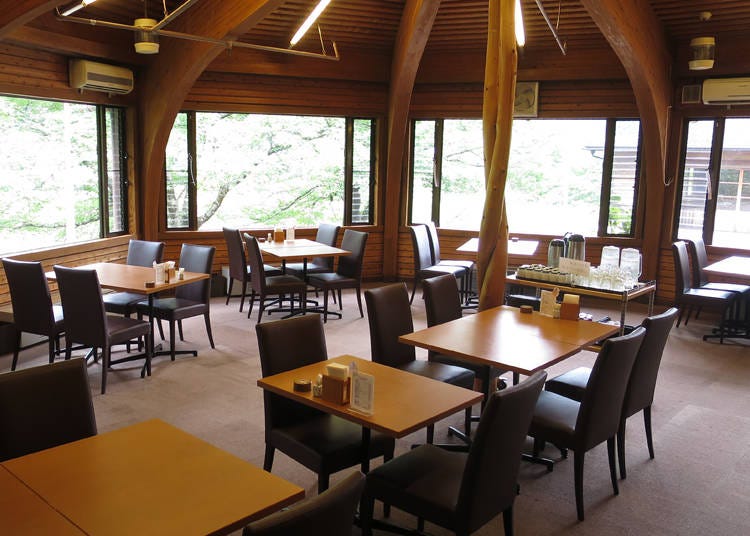
To get an indulgent taste of Miyama's culinary culture, head to Kajikaso, a welcoming restaurant that serves local produce, including fish, deer, and poultry. Kajikaso uses rice and vegetables grown in the surrounding fields, and wild vegetables and game from the nearby mountains in their menus. Several courses allow you to try regional delicacies. The Wild Game Course showcases animals native to the region and includes dishes such as roasted venison, grilled venison, and wild boar stew.
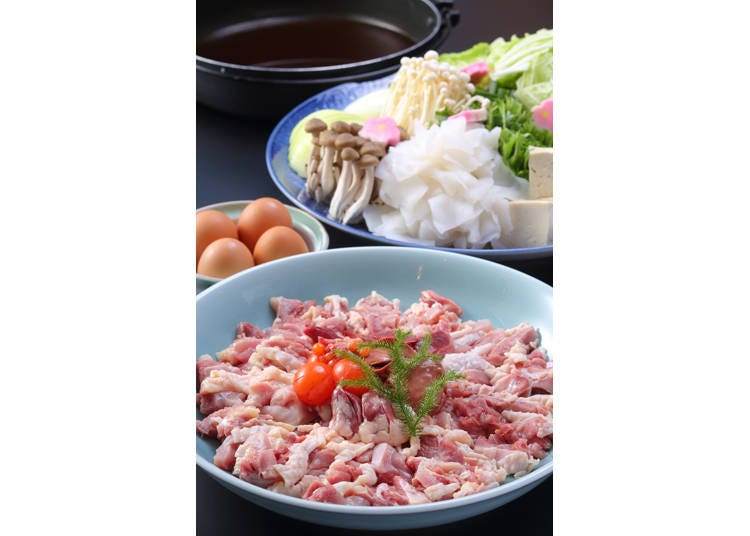
The Chicken Kyo Jidori Sukiyaki Course presents the village's local poultry in a seasoned sukiyaki broth that you can cook right at your table. The Seasonal Kaiseki Course focuses on Japan's traditional kaiseki banquet food, which consists of numerous small dishes that are equally visually appealing as they are delicious.
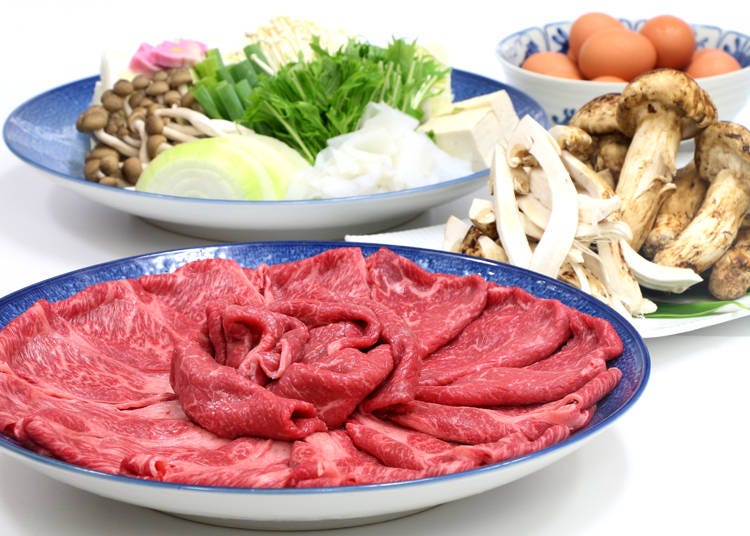
Courses include an all-you-can-eat Tajima beef sukiyaki hot pot starting from 6,600 yen; a chicken hot-pot meal from 4,400 yen; and an all-you-can-eat branded beef and matsutake mushroom hot pot from 8,800 yen. An a la carte and set-meal menu are also available. For drinks, consider trying local doburoku sake, a type of unrefined home-brewed spirit that is shaded milky white from the rice. All prices are inclusive of tax.
-
Miyama Nature & Culture Village Kajikaso美山町自然文化村 河鹿荘
- Address 25 Agake Shimo, Miyama Town, Nantanshi, Kyoto
- Phone Number 0771-77-0014
Business hours:11:30 a.m.–3 p.m.(Last order 2 p.m.) & 5 p.m.–8 p.m.(Last order 7:30 p.m.)
Closed:Open year-round
Languages available:English, Japanese
Email:kajika@cans.zaq.ne.jpVacancy search, reservation
-
from 16,500JPY 1room, 2adults
Check with our partner site as the latest rates, rate details, and guest room requirements may vary.
Access information
It takes around 1 hour 40 minutes from Kyoto Station via bus, around 2 hours 30 minutes from Kansai International Airport, and around three hours from Chubu Centrair International Airport.
- Area
- Category
*Prices and options mentioned are subject to change.
*Unless stated otherwise, all prices include tax.
Popular Tours & Activitiess
Recommended places for you
-

Kanzenkoshitsuyakinikutabehodai Gyugyu Paradise Sannomiya
Yakiniku
Kobe, Sannomiya, Kitano
-
Goods

Yoshida Gennojo-Roho Kyoto Buddhist Altars
Gift Shops
Nijo Castle, Kyoto Imperial Palace
-
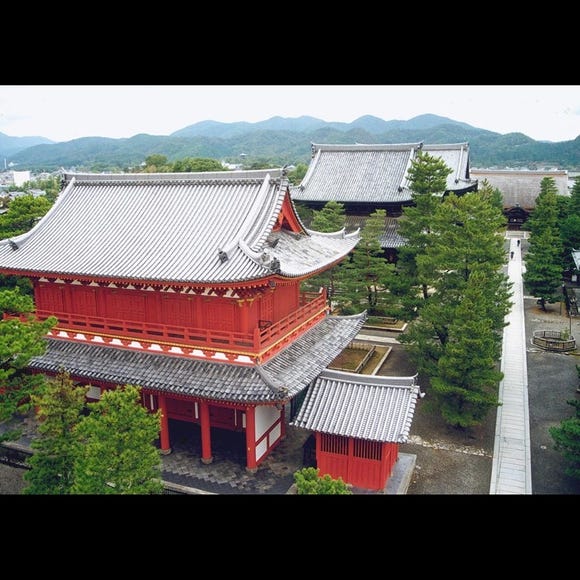
Myoshin-ji Temple
Temples
Arashiyama, Uzumasa
-

Jukuseiniku-to Namamottsuarera Nikubaru Italian Nikutaria Sannomiya
Izakaya
Kobe, Sannomiya, Kitano
-

ISHIDAYA Hanare
Yakiniku
Kobe, Sannomiya, Kitano
-

Kambei Sannomiyahonten
Yakiniku
Kobe, Sannomiya, Kitano
-

New Way to Reach Koyasan! Ride Nankai's 'GRAN Tenku' for a Heavenly Journey
by: Guest Contributor
-

Everything You Need to Know About teamLab Biovortex Kyoto (2025 Insider Guide)
by: Wemmy Chau
-

A First Look at NEMU RESORT’s 2026 Grand Renewal in Ise-Shima: A Resort Shaped by Village, Sea, and Forest
by: Guest Contributor
-
Ad

Café Bahnhof in Osaka: The home-roasted coffee that captivated G20 leaders!
-

Celebrate a Dreamy Barbapapa Christmas at JR Osaka Station's Twilight
by: Guest Contributor
-

November Events in Kansai: Fun Festivals, Food, and Things to Do in Kyoto & Osaka
Inspiration for Accommodations
-

Spacious Family Hotel in Namba: 20 Comfortable Stays for Family Fun
-

Charming Hotels to Enjoy the Spectacular Views of Arashiyama's Autumn Leaves from Your Room
-

Experience Stunning Views of Osaka Castle from Private Spaces: Top Hotels Near Osaka Castle
-

Recommended by Visitors! Arashiyama's Best-Rated Hotels
-

Family-Friendly Universal Studios Japan Hotel with Excellent Access
-

Enjoy a Comfortable Stay in Osaka! 10 Hotels with Convenient Airport Shuttle Services
-

Top 10 Recommended Hotels Near Namba Station with Great Access
-

Enjoy Night Views from Your Room! Recommended Hotels in Namba Area
-

First Time in Nara: Where To Go And What To Do in Japan's Famous City
by: WESTPLAN
-

38 Best Things to Do in Kyoto: See, Eat, and Shop Your Way Through Japan's Cultural Capital
-

Ninenzaka and Sannenzaka: Walking Guide to Kyoto's Best Old Streets
by: WESTPLAN
-

Can’t Get Where You’re Going in Kyoto? What do “Agaru” and “Sagaru” Mean? Kyoto’s Unique Address System!
-

Popular Food at Universal Studios Japan
by: WESTPLAN
-

Complete Guide to Buying Japanese Medicine in Japan: Phrases and Vocabulary You Need to Know
- #best gourmet Osaka
- #things to do Osaka
- #what to do in kyoto
- #what to bring to japan
- #best gourmet Kyoto
- #new years in Osaka
- #what to buy in nanba
- #Visiting Osaka
- #onsen tattoo friendly arima
- #daiso
- #Visiting Kyoto
- #best japanese soft drinks
- #japanese fashion culture
- #japanese convenience store snacks
- #japanese nail trends













